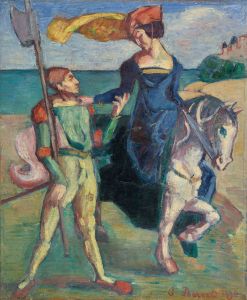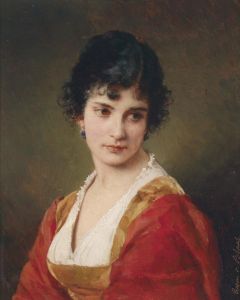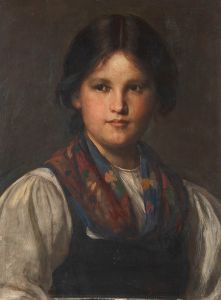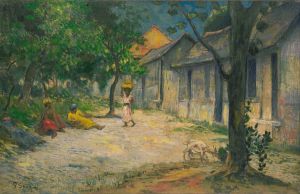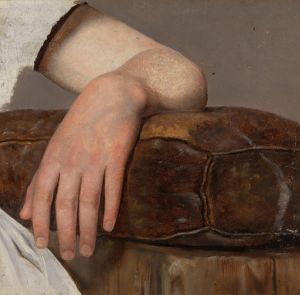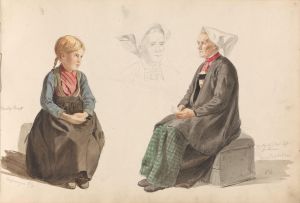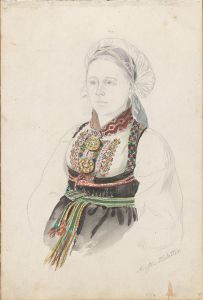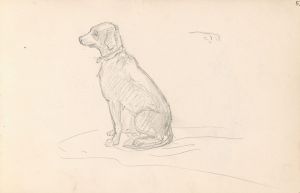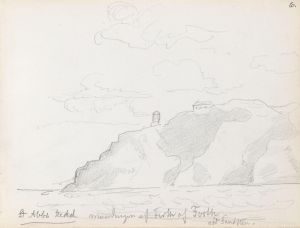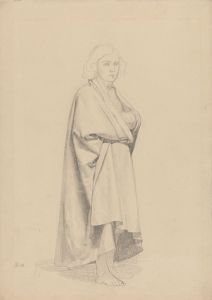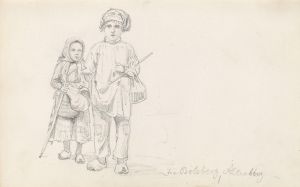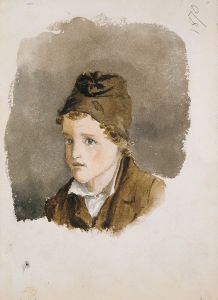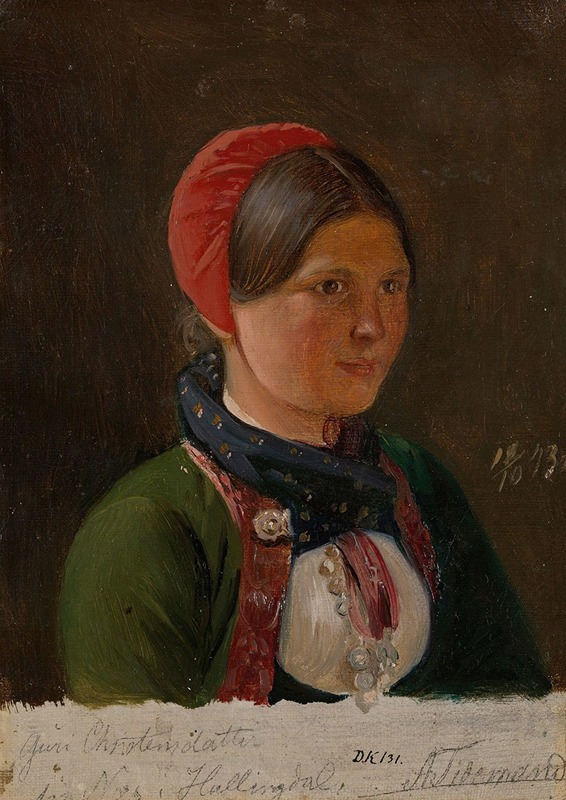
Girl from Hallingdal
A hand-painted replica of Adolph Tidemand’s masterpiece Girl from Hallingdal, meticulously crafted by professional artists to capture the true essence of the original. Each piece is created with museum-quality canvas and rare mineral pigments, carefully painted by experienced artists with delicate brushstrokes and rich, layered colors to perfectly recreate the texture of the original artwork. Unlike machine-printed reproductions, this hand-painted version brings the painting to life, infused with the artist’s emotions and skill in every stroke. Whether for personal collection or home decoration, it instantly elevates the artistic atmosphere of any space.
"Girl from Hallingdal" is a painting by the Norwegian artist Adolph Tidemand, who was a prominent figure in the 19th-century Norwegian art scene. Tidemand is best known for his genre paintings that depict Norwegian rural life and traditions, capturing the essence of the country's cultural heritage during a time of national romanticism.
Adolph Tidemand was born on August 14, 1814, in Mandal, Norway. He studied art in Copenhagen and later in Düsseldorf, where he became associated with the Düsseldorf School of painting. This movement was characterized by its detailed and realistic portrayal of subjects, often with a focus on historical and genre scenes. Tidemand's works are celebrated for their meticulous attention to detail and their ability to convey the spirit of Norwegian folk culture.
"Girl from Hallingdal" is one of Tidemand's many works that illustrate his fascination with Norwegian rural life. Hallingdal is a valley in Buskerud, Norway, known for its rich cultural traditions and distinctive folk costumes. The painting depicts a young girl from this region, dressed in traditional attire. Tidemand's portrayal is both respectful and affectionate, highlighting the beauty and uniqueness of Norwegian folk costumes.
The painting is noted for its vibrant colors and intricate details, which are characteristic of Tidemand's style. The girl's costume is rendered with precision, showcasing the elaborate embroidery and patterns typical of Hallingdal's traditional dress. This attention to detail not only reflects Tidemand's skill as an artist but also his dedication to preserving Norwegian cultural identity through his art.
Tidemand's work, including "Girl from Hallingdal," played a significant role in the national romantic movement in Norway. This movement sought to promote and preserve Norwegian culture and identity at a time when the country was seeking independence and a distinct national identity. By focusing on rural life and traditional customs, Tidemand's paintings contributed to a greater appreciation and understanding of Norway's cultural heritage.
Throughout his career, Tidemand collaborated with other artists, most notably Hans Gude, with whom he created several famous works, including "Bridal Procession on the Hardangerfjord." While "Girl from Hallingdal" is a solo work, it shares the same thematic focus on Norwegian life and traditions that characterizes much of Tidemand's oeuvre.
Adolph Tidemand passed away on August 25, 1876, but his legacy lives on through his art, which continues to be celebrated for its historical and cultural significance. "Girl from Hallingdal" remains an important piece within Tidemand's body of work, exemplifying his commitment to capturing the essence of Norwegian folk life and contributing to the broader narrative of national romanticism in 19th-century Norway.





